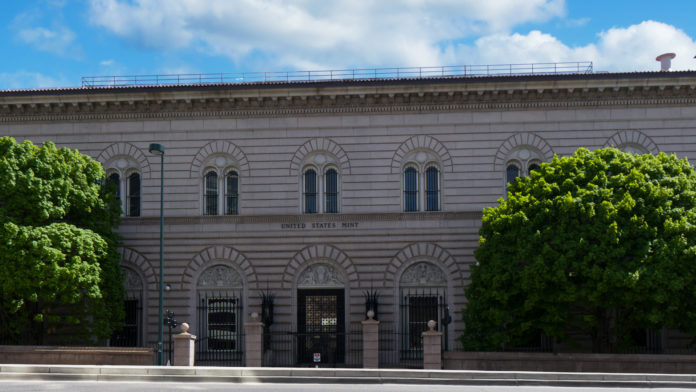

1920s Denver is often associated with bootlegging, booming population growth and tumultuous governmental control as powerful legislative and executive seats were taken by members of the Ku Klux Klan. 1922 is also when the Denver Mint was robbed by a gang of bandits, culminating in the “wildest gun battle in Denver history,” according to the Craig Courier in December 1922.
“Four bandits held up a federal reserve bank automobile in front of the United States mint here, and after a terrific gun battle with mint employees, made their escape with $200,000 in $5 bills,” reported the Cheyenne Wells Record in December 1922. The Cheyenne Wells Record went on to note the robbery was the first successful mint holdup in U.S. history and that the robbery was also the largest in Denver history to date.
Two members of the gang held up a federal reserve bank truck outside of the Mint with sawed-off shotguns on the morning of Dec. 18, 1922. One federal reserve guard and “widely known politician,” Charles Linton was killed in the ensuing shootout, according to the Cheyenne Wells Record. The Craig Courier reported that a visitor sketched the gang leader as the shootout was happening from where he sat at an upper-level window. The witness described the man as “somewhat short of statu[r]e, with heavy square shoulders, black hair cut square across the back of the neck, a sporty brown overcoat and black soft hat, he carried the impression of a well dressed city man.”
A month after the robbery, the Jefferson County Republican reported that after the robbery, the bandits made their way to a garage at 1651 Gilpin Street in Denver, which they had rented a few days before, with a mortally wounded companion, later identified as J.C. Sloan where “they left the dead body of Sloan crumpled up.” The Jefferson County Republican reported Sloan was believed to be the leader of the gang. The discovery of Sloan led investigators to other leads in the case including a trunk filled with firearms and ammunition and photographs and letters.
Three months after the robbery, the Longmont Ledger reported an arrest was made in Albuquerque. J.W. Morgan and Pearl Ward were arrested in March 1923 in connection with the robbery, but neither would divulge more information to investigators about the Mint robbery.
The Daily Times reported in May 1925 that Michael Narey, who had been arrested that day for being unable to pay for his suite of rooms at the Congress Hotel, admitted to being part of the gang involved in the robbery. Narey said two girls assisted in the robbery and identified Sloan, noting he’d been killed in the raid. The Daily Times also noted that a checkup on Narey’s alibi showed he was in San Quentin State Prison in California at the time of the robbery.
“No one was ever charged with the robbery, despite Denver Police Chief A.T. Clark’s announcement 12 years later that the robbery team had been identified. The suspects that were identified were already in prison on unrelated charges or had died,” reported K5 News in 2014.

